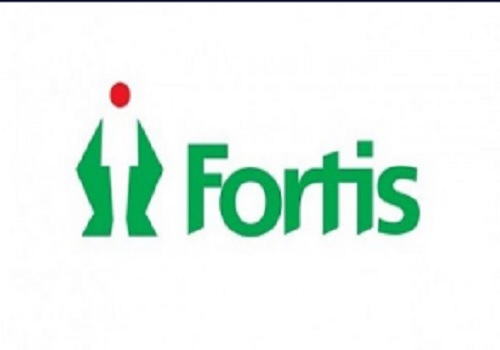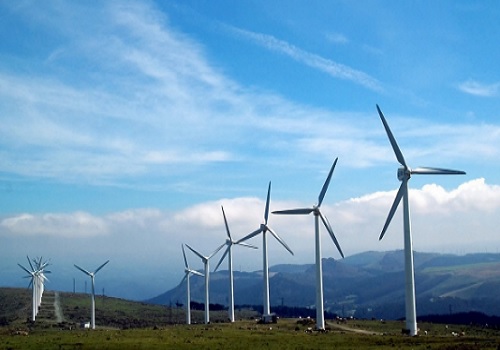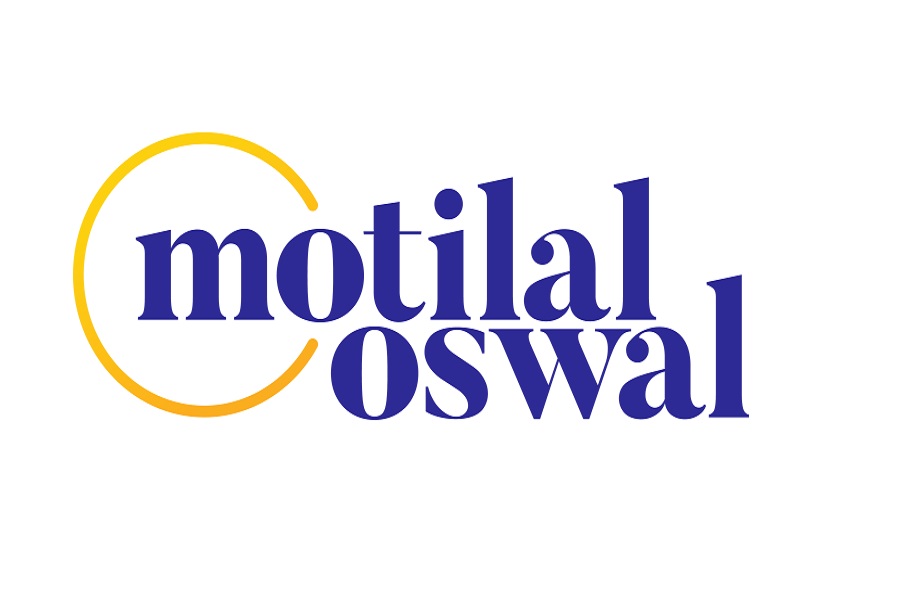Natural gas gains on forecasts for extremely cold weather that will boost demand - Kedia Advisory

Gold
Gold experienced a decline of -0.34%, settling at 61788, as it erased earlier gains due to a rebound in the U.S. dollar, influenced by robust economic data from the United States. The strong economic indicators tempered expectations for the initiation of monetary easing by the Federal Reserve in March. Both the annual and monthly inflation rates surpassed expectations, with the former accelerating to 3.4% in December from 3.1% in November. Additionally, initial jobless claims fell to 202,000, missing projections of 210,000, highlighting the ongoing tightness in the labor market. Traders adjusted their expectations for a March rate cut by the Federal Reserve after the U.S. government report revealed stronger-than-anticipated inflation in December. Futures contracts linked to the Fed's target for the overnight lending rate between banks declined, now suggesting a 60% chance of a March rate cut, compared to the 70% chance before the data release. Traders are currently anticipating the policy rate, presently in the 5.25%-5.5% range, to end the year at around 3.92%, according to rate futures prices. In the physical gold market, buying in India increased as domestic prices retreated from record highs. Technically, the gold market is undergoing long liquidation, with a -5.78% drop in open interest, settling at 9300. Prices are down by -208 rupees, and gold is finding support at 61525, with a potential test of 61255 if this level is breached. On the upside, resistance is expected at 62270, and a move beyond that could lead to testing 62745.
Trading Ideas:
* Gold trading range for the day is 61255-62745.
* Gold pared gains due to a rebound in dollar and strong economic data from US.
* Inflation rates in the US exceeded expectations, with the annual rate rising to 3.4% in December.
* Traders pare bets Fed will cut rates in March after inflation data
Silver
Silver faced a decline of -0.85%, settling at 71354, as it succumbed to pressure from a stronger U.S. dollar. The dollar gained strength after hopes for an earlier interest rate cut by the Federal Reserve were dashed by a stronger-than-anticipated U.S. inflation print and a surprise drop in initial jobless claims. U.S. consumer prices in December exceeded expectations, rising 0.3%, with the cost of shelter accounting for more than half of the increase. The consumer price index (CPI) rose 3.4% in the 12 months through December, up from 3.1% in November. This higher-than-expected inflation could potentially delay an anticipated interest rate cut by the Federal Reserve in March. The unexpected drop in the number of Americans filing for unemployment benefits, falling to 202,000 against the projected 210,000, underscored the historically tight U.S. labor market. Silver's appeal as a safe-haven asset tends to decrease in a high-interest-rate environment. Technically, the silver market is undergoing fresh selling, with a 9.08% increase in open interest, settling at 28324. Prices are down by -615 rupees, and silver is finding support at 70835, with a potential test of 70315 if this level is breached. On the upside, resistance is expected at 72200, and a move beyond that could lead to testing 73045. The market's performance is influenced by the delicate balance between inflationary pressures, interest rate expectations, and the global economic landscape.
Trading Ideas:
* Silver trading range for the day is 70315-73045.
* Silver dropped amid diminished hopes for an interest rate cut by the Fed.
* The annual inflation rate in the US rose to 3.4% in December, surpassing market expectations of 3.2%.
* The number of Americans filing for unemployment benefits fell, indicating a tight US labor market.
Crude oil
Crude oil prices rose by 1.26% to settle at 6006 after an oil tanker was boarded by an armed group in Oman, raising concerns about escalating conflict in the Middle East. Investor attention remained focused on the region, where Houthi attacks on Red Sea shipping disrupted oil flows. Additionally, Libya's Sharara oilfield ceased production due to political protests, removing 300,000 barrels per day from the market. Despite these geopolitical concerns supporting prices, U.S. crude oil stockpiles unexpectedly rose last week, and fuel inventories grew more than anticipated, according to the Energy Information Administration (EIA). Crude inventories increased by 1.3 million barrels to 432.4 million barrels, contrary to expectations of a 700,000-barrel drop. Gasoline stocks surged by 8 million barrels to 245 million barrels, the highest level since February 2022. Barclays lowered its Brent crude price forecast for the year by $8 to $85 per barrel, citing higher supply. The revision is influenced by a higher starting point for inventories and a potentially longer path to OPEC spare capacity normalization. However, Barclays expects demand momentum to strengthen sequentially and anticipates a sharp deceleration in non-OPEC+ supply growth in 2024. Technically, the market is undergoing short covering, with a 7.05% drop in open interest, settling at 11636. Prices are up by 75 rupees, and crude oil is finding support at 5916, with a potential test of 5825 if this level is breached. On the upside, resistance is expected at 6114, and a move beyond that could lead to testing 6221.
Trading Ideas:
* Crudeoil trading range for the day is 5825-6221.
* Crude oil gains amid escalating tensions in the Middle East.
* Houthi attacks on Red Sea shipping disrupted oil flows in the Middle East
* Libya's Sharara oilfield ceased production due to political protests, removing 300,000 barrels per day
Natural gas
Natural gas prices surged by 6.71% to settle at 265.5, driven by forecasts for extremely cold weather next week, which is expected to boost demand to record highs. The anticipation of a significant drawdown in natural gas storages added to the bullish sentiment. U.S. utilities withdrew 140 billion cubic feet of natural gas during the week ending January 5, exceeding market expectations of a 119 bcf draw. This drawdown was significantly higher than the 23 bcf withdrawal in the same week last year and the five-year average decline of 89 bcf. In Europe, however, gas prices have been sinking due to sluggish industrial demand and ample stockpiles capable of handling prolonged periods of low temperatures on the continent. The European gas storage level is near 82%, providing a buffer against supply disruptions. In the U.S., average gas output in the Lower 48 states fell to 107.1 billion cubic feet per day (bcfd) in January, down from the monthly record of 108.5 bcfd in December. Meteorologists project a shift in U.S. weather patterns, transitioning from mostly warmer than normal conditions to colder than normal from January 13-21. Subsequently, the forecast indicates a return to mostly warmer than normal conditions from January 22-26. Technically, the natural gas market is experiencing fresh buying, with an 18.82% increase in open interest, settling at 17252. Prices have risen by 16.7 rupees, and natural gas is finding support at 250.6. If this support is breached, a potential test of 235.8 levels could follow. On the upside, resistance is likely at 274.6, and a move beyond that could lead to testing 283.8.
Trading Ideas:
* Naturalgas trading range for the day is 235.8-283.8.
* Natural gas gains on forecasts for extremely cold weather that will boost demand.
* US utilities pulled 140 billion cubic feet of natural gas from storages
* European Gas prices are sinking with industrial demand not picking up at all
Copper
Copper prices experienced a modest uptick, closing up by 0.08% at 717, supported by a softer dollar and Chinese government efforts to bolster the yuan, enhancing purchasing power for the top consumer. The LME market's ample copper supplies led to a cash copper discount over the three-month contract, reaching a record high of $108 per ton this week. Despite challenges like weak Chinese demand and a restrained growth outlook in major markets, BMI, a unit of Fitch Solutions, anticipates a slight improvement in copper prices in 2024. BMI's 2024 average forecast is maintained at $8,800/tonne, reflecting factors such as supply constraints and a potential decline in the U.S. dollar strength, especially if the Federal Reserve initiates rate cuts later in the year. Data for December revealed that China's copper cathode output reached 999,400 mt, marking a 3.86% increase from the previous month and a year-on-year surge of 14.87%. However, it fell short of the expected 1.0045 million mt by 5,100 mt. The cumulative output from January to December stood at 11.4401 million mt, reflecting a year-on-year increase of 11.26%, marking the largest annual gain in recent years. Technically, the copper market is witnessing short-covering, with a 4.01% decline in open interest, settling at 5968. Prices have edged up by 0.6 rupees. Copper is finding support at 715, and a breach of this level could lead to a test of 712.9. On the upside, resistance is likely at 720.2, and a move above could see prices testing 723.3.
Trading Ideas:
* Copper trading range for the day is 712.9-723.3.
* Copper gains supported by a softer dollar and Chinese government support for the yuan
* Abundant supplies of LME copper market have created a discount for cash copper over 3M contract
* China's copper cathode output in December increased from the previous month and year-on-year.
Zinc
Zinc prices closed up by 0.22% at 223.35, buoyed by China's efforts to support the yuan, enhancing the purchasing power of buyers in the world's leading metals consumer. The refined zinc production in China for December 2023 surged to 590,900 tons, marking a 2.05% increase from the previous month and a significant 12.38% rise compared to the same period last year, surpassing earlier estimates. On the global front, the U.S. non-manufacturing purchasing managers' index and the service industry employment sub-indicator for December both registered declines, restraining the ascent of the U.S. dollar. Moreover, the New York Fed's December survey revealed a notable drop in consumers' inflation expectations for 2024, falling to 3.01%, the lowest in three years. Looking ahead, domestic refined zinc production in China is anticipated to decrease to 572,400 metric tons in January 2024 from the December figure of 590,900 metric tons. This potential decline, coupled with a short supply in the market, is expected to provide support for SHFE zinc prices. On the global scale, data from the ILZSG indicated a easing of the global zinc market deficit, which decreased to 52,500 metric tons in October from a deficit of 62,000 tons in September. From a technical standpoint, the market is currently under short covering, with open interest witnessing a drop of -2.06% to settle at 2524. With the current zinc price at 223.35, support is identified at 222.6, and a breach below this level could test 221.8. On the upside, resistance is expected at 224.3, and a breakthrough might lead to prices testing 225.2.
Trading Ideas:
* Zinc trading range for the day is 221.8-225.2.
* Zinc gains as China's move to support the yuan has boosted the purchasing power.
* China's refined zinc production in December 2023 increased by 2.05% compared to the previous month.
* Domestic refined zinc production is expected to decrease in January 2024, potentially causing a short supply
Aluminium
Aluminium prices experienced a decline of -0.39%, settling at 202.85, as traders assessed global economic challenges. The World Bank's warning about a projected third consecutive year of slowing global growth in 2024, coupled with concerns over China's economic expansion slowing to 4.5%, contributed to a subdued market sentiment. The anticipation of policy easing in China to support its economy led to a weaker yuan, making the greenback-priced metal more expensive for Chinese buyers. The refinery, with an annual alumina production capacity of 2.2 million tons, has been operating at around 80% of its capacity since January 2023. This decision reflects the broader challenges in the aluminium industry and could impact global supply dynamics. On the production front, China's domestic aluminium production in December 2023 is estimated to be approximately 3.6 million tons, reflecting a 2.1% increase compared to the previous month and a 3.5% growth from the same month a year ago. The annual production forecast for 2023 is expected to reach 41.5 million tons, indicating a year-on-year growth of 3.6%. November witnessed a temporary decrease in aluminium output due to production cuts in Yunnan province during the dry season, but this didn't impact December's production. From a technical standpoint, the market is currently under long liquidation, with open interest remaining unchanged at 4290. With the current price at 202.85, aluminium finds support at 202.2, and a breach below this level could test 201.5. On the upside, resistance is expected at 203.9, and a breakthrough might lead to prices testing 204.9.
Trading Ideas:
* Aluminium trading range for the day is 201.7-204.7.
* Aluminium settled flat as traders assessed global economic headwinds
* The World Bank forecasted China's economic growth to slow to 4.5% in 2024.
* Alcoa to curtail alumina production at Kwinana refinery
Cottoncandy
Cottoncandy prices remained unchanged at 55620, with market dynamics influenced by Brazil's record-high cotton production in the 2022-23 season. The increased cultivation and productivity in Brazil contributed to a surge in global cotton supply. However, despite the boost in supply, the cotton market faced challenges due to sluggish demand, attributed to unfavorable economic conditions. The Cotton Association of India (CAI) maintained its pressing estimate for the 2023-24 season at 294.10 lakh bales. CAI President Atul S Ganatra mentioned that total supply till the end of November was estimated at 92.05 lakh bales. This comprised market arrivals of 60.15 lakh bales, imports of 3 lakh bales, and opening stocks of 28.90 lakh bales. Reports of pink bollworm infestation in the cotton crop have witnessed a decline, reducing from 30.62% during 2017-18 to 10.80% in 2022-23. Despite challenges, Brazilian cotton shipments increased by 12% in November 2023 compared to October but decreased by 5.5% compared to the same period in 2022. The International Cotton Advisory Committee (ICAC) projected that global cotton production is expected to outpace consumption for the second consecutive year. Global cotton lint production is forecasted to grow 3.25% year-on-year to 25.4 million metric tons in the 2023-2024 season, while consumption is expected to marginally decline to 23.4 million metric tons. Technically, the market is undergoing fresh selling, with a 2.01% increase in open interest to settle at 203. Prices remain unchanged at 55620. Cottoncandy is finding support at 55400, with a potential test of 55170 if this level is breached. On the upside, resistance is expected at 55820, and a move beyond that could lead to testing 56010.
Trading Ideas:
* Cottoncandy trading range for the day is 55170-56010.
* Cotton settled flat as Brazil hits record cotton production in 2022-23
* Global cotton production expected to outpace consumption for second year in a row.
* Pink bollworm infestation in cotton crop has declined.
* In Rajkot, a major spot market, the price ended at 26388.8 Rupees dropped by -0.14 percent.
Turmeric
Turmeric prices observed a decline of -1.08%, settling at 13056, primarily attributed to slower buying activities ahead of the anticipated release of stocks before the commencement of new crops in January 2024. The market also faced pressure due to favorable weather conditions improving crop conditions, but the downside is limited by potential yield losses resulting from unfavorable weather. The crop's current satisfactory condition indicates readiness for harvest between January and March, potentially stabilizing prices at current levels. The prospect of yield losses due to adverse weather conditions, along with improved export opportunities, offers support to turmeric prices. Exports have increased by 25%, reflecting growing demand in both developed and emerging nations. However, expectations of a 20–25% decline in turmeric seeding this year, particularly in key areas like Maharashtra, Tamil Nadu, Andhra Pradesh, and Telangana, contribute to uncertainties in the market. In October 2023, 10,137.78 tonnes of turmeric were exported, showing a gain of 11.58% compared to September 2023. However, exports in October 2023 declined by 9.30% compared to October 2022. In the spot market, Nizamabad witnessed a 0.47% increase in prices, suggesting some positive sentiment. From a technical standpoint, the market is under fresh selling pressure, with a 1.02% gain in open interest, settling at 11915. With the current price at 13056, turmeric is supported at 12916, and a breach below this level could test 12774. On the upside, resistance is expected at 13250, and a breakthrough might lead to prices testing 13442.
Trading Ideas:
* Turmeric trading range for the day is 12774-13442.
* Turmeric dropped as buying activities has been slower.
* Pressure also seen amid improved crop condition due to favorable weather condition.
* However, downside seen limited due to the potential for yield losses caused by the crop's unfavourable weather.
* In Nizamabad, a major spot market, the price ended at 12919.3 Rupees gained by 0.47 percent.
Jeera
Jeera prices experienced a decline of -0.28% to settle at 26505, primarily driven by short covering. This drop was prompted by higher production expectations in key regions such as Gujarat and Rajasthan. The substantial increase in Jeera sowing in Gujarat, up by nearly 102% to 544,099.00 hectares, and a 13% rise in cumin area in Rajasthan, reaching 6.32 lakh hectares, have created a surplus, putting downward pressure on prices. Favorable weather conditions have facilitated smooth sowing activities, contributing to this surge in production. However, this increased production is met with challenges in the export market. Global demand for Indian jeera has declined as buyers opt for alternative sources like Syria and Turkey, citing the comparatively higher prices in India. The competition has led to a 34.02% drop in Jeera exports from April to October 2023, with only 76,367.90 tonnes shipped compared to 1,15,748.90 tonnes in the same period last year. The slump continued in October 2023, with a 46.77% decrease in exports compared to October 2022. In the spot market, Unjha witnessed a 0.14% decline in prices, signaling ongoing challenges for Jeera. The technical overview indicates a market under long liquidation, with a 2.39% drop in open interest, settling at 1836. Currently priced at 26505, Jeera finds support at 26160, and a breach below this level could test 25800. On the upside, resistance is anticipated at 26940, and a breakthrough might lead to prices testing 27360.
Trading Ideas:
* Jeera trading range for the day is 25800-27360.
* Jeera gains on short covering after prices dropped due to higher production prospects
* In Gujarat, Cumin sowing witnessed very strong growth by nearly 103% with 530,030.00 hectares against sown area of 2022
* Stockists are showing interest in buying on recent downfall in prices triggering short covering.
* In Unjha, a major spot market, the price ended at 31469.8 Rupees dropped by -0.14 percent.
Views express by all participants are for information & academic purpose only. Kindly read disclaimer before referring below views. Click Here For Disclaimer






















